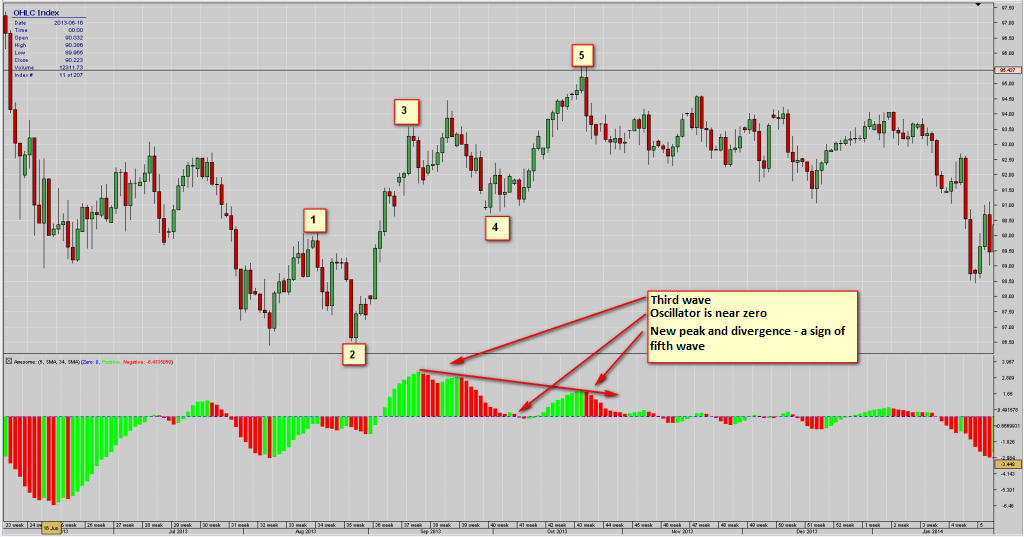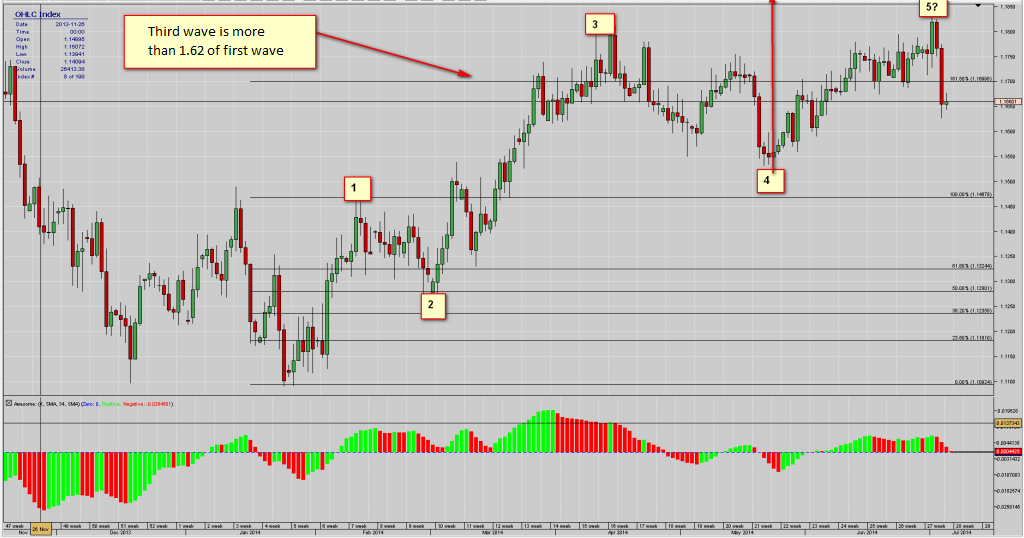 The Elliott Wave Theory is a popular tool used by traders to forecast where prices might head in the future. Ralph Elliott discovered this wave pattern in the 1930s. Since patterns do not just come from anywhere, or from out of space, but result from all the interactions of traders, buying and selling, you see the patterns repeating over and over again. This indicates that human behaviour is repetitive. Elliott’s repetitive wave sequence reflects these human emotions on the financial markets.
The Elliott Wave Theory is a popular tool used by traders to forecast where prices might head in the future. Ralph Elliott discovered this wave pattern in the 1930s. Since patterns do not just come from anywhere, or from out of space, but result from all the interactions of traders, buying and selling, you see the patterns repeating over and over again. This indicates that human behaviour is repetitive. Elliott’s repetitive wave sequence reflects these human emotions on the financial markets.
Many people look at Elliott Wave theory and think they understand it but cannot use it in a practical manner.The issue tends to be the many variables when determining the wave patterns. One other issue is that despite its popularity, Elliott Wave only gives perfect patterns very occasionally.Everything you need to understand the Elliott Wave Theory is displayed in a number of textbooks. The purpose of this article is to try to disseminate a practical trading strategy using Elliott wave.
Basics
- According to the theory, markets move according to a specific wave pattern.
- Five waves in one direction are the wave pulse, followed by three-wave correction and the process begins again only in a higher cycle.
- We will focus on a single five-wave pattern and simple adjustments occurring during its creation and after its completion. In short, we are interested only in the first pulse and the rest is immaterial for the purposes of this article.
Basic rules on impulse
- Wave 2 never retraces more than 100% of wave 1;
- Wave 4 retraces more than 100% of wave 3;
- Wave 3 always goes beyond the end of wave 1;
- Wave 3 is never the shortest wave;
- Wave 4 is not in wave 1 area.
Impulse wave looks like this
A very useful tool in determining waves is the Awesome Oscillator. This available in any platform toolbox.
This oscillator compares momentum as the rate of change in prices including 5 periods with a 34-period momentum. The biggest swing on the oscillator shows us that we are seeing a wave 3.
If after determination of the third wave, the oscillator descends to the area close to zero, and further pivots in the same direction to form a divergence from the previous deflection, this will mean the formation of the wave 5.
To determine the end of the wave 5 we use a 7-period DMA shifted by 5 periods to the right. Breaking the average using a Candle Pattern marks the end of the wave 5.
Let’s take a look at retracements and ranges These greatly simplify the determination of entry and exit from positions.
Statistically speaking:
- Wave 2 retracement is most often at 50% or 62% of the first wave;
- Wave 4 retracement is the most often at 38% or 50% of the third wave.
We also have to deal with other retracements, such as 24% of wave 3.
However, there is not enough space to build an appropriate adjustment for making orders on the fifth wave, and we can skip these situations.
Another example is the 75% retracement of the first wave, which statistically is skipped, but in some cases, such as when an irregular correction happens, it is working very well and should be taken into account.
Ranges
- The most common is that wave 3 is 1.62 or 2.62 of the first wave;
- If the third wave is bigger than 1.62 of wave 1, then the fifth wave is equal to the first one or is 1.62 or 2.62 of the first one;
- If the third wave is smaller than 1.62 of wave 1, then the fifth wave is equal to 0.62 or 1.62 of the first wave or is equal to the distance from the beginning of wave 1 to the end of wave 3.
The relationship, where the third wave is the longest and represents more than 1.62 of the first wave and wave 5 is equal to wave 1 is the most interesting. All of these values are obviously not counted completely accurately to within a pip.
Here is an example in which the third wave is more than 1.62 of the first wave. We then expect that the fifth wave will equal the first wave or will constitute its length of 1.62 or 2.62.
Corrections
Only two types of correction really work in these patterns:
- Zig-zag, which is the three-wave simple correction. It takes the form of 5-3-5, or five waves opposite to impulse, then three waves in direction of the trend and again five waves opposite. It is set as ABC;
- Wave B represents about 50 per cent of wave A;
- Wave B should not retrace more than 75% of wave A;
- Wave C is either equal to the wavelength A or of 1.62 or 2.62 of the length of wave A;
- Wave C often creates a divergence of wave A on the Awesome Oscillator;
- I only play this correction when wave A is equal to wave C.
The second type of correction, which is ideally suited for use, is an irregular correction:
- This is the correction with a 3-3-5 structure, where wave B makes a new peak piercing the tip of the impulse wave and the wave C is beyond the end of wave A;
- Wave B is 1.15 or 1.25 of wave A;
- According to me a maximum level of wave B can be not level of 1.25 but 1.62 of wave A;
- Wave C is 1.62 or 2.62 of wave A;
- This pattern occurs everywhere and very often.
How to trade
- There are only two scenarios which regularly bring success:
- The first is the beginning of a pulse in one direction and irregular correction. The second is the wave impulse and correction as a zigzag;
Step one
We find a pulse as a five-wave movement in any direction, deliberately skipping the correct designation of lower waves. This is just an example of the decision-making mechanism. We do not need to worry too much about what’s inside the structure, let analysts deal with them.
Step Two
Check whether the end of the pulse is (not as in this case) the additional three-wave structure.
If there is, mark the retracement of the pulse wave. We are interested in only 50%, 62% and 75%.
Step Three
Set the range for wave C.
As you can see in the chart below, two retracements are overlapping. 50% of the impulse wave and 2.62 range of wave A. In addition, check whether at this point there is still something important such as LT or S/R. It is not necessary, but there is often something additional reinforcing the decision.
Step Four
- Entry into positions on any system candle known from Price Action;
- A stop loss is placed over the critical retracement of 75;
- Take Profit can be set in two ways. Either the behavior of the price and where it is giving an adequate level of Risk:Reward or by designating a third wave range based on the first wave.

















![How to install MetaTrader 4 / 5 on MacOS Catalina? Simple way. [VIDEO]](https://comparic.com/wp-content/uploads/2020/07/mt4-os-218x150.jpg)








